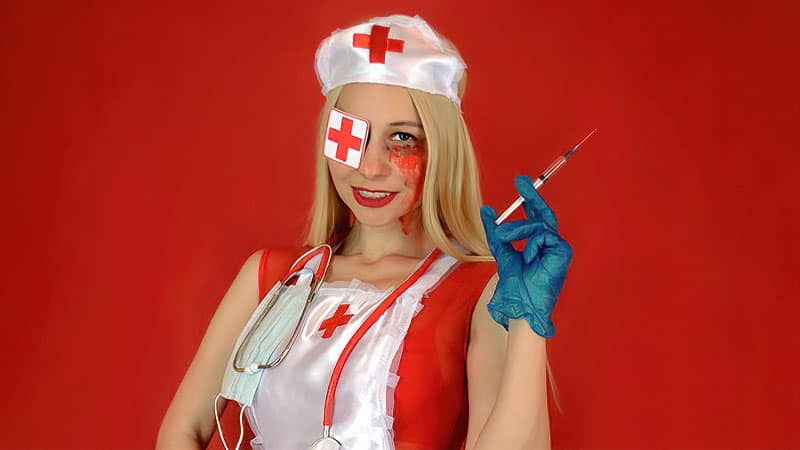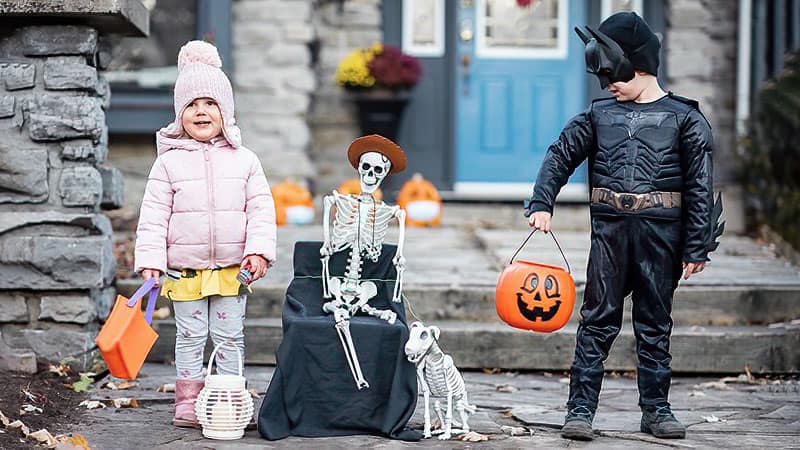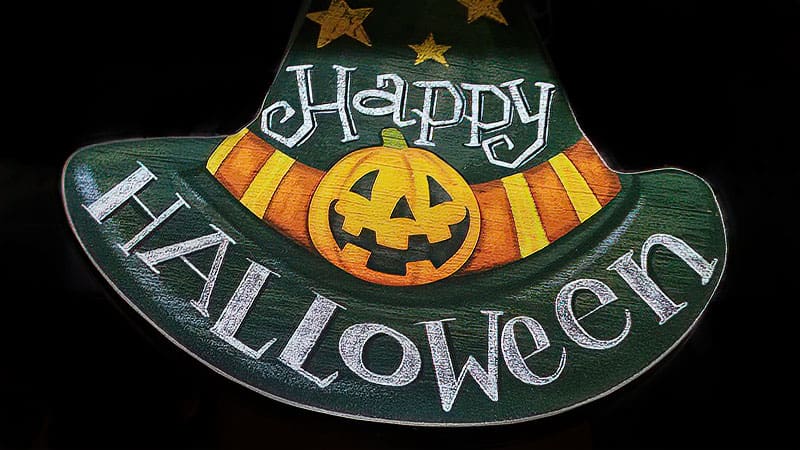General CDC Guidelines
While last year the CDC discouraged trick-or-treating, in a Face the Nation interview that aired on September 26th, CDC Director Dr. Rochelle Walensky gave a hopeful Halloween message to children around the country. When asked if kids would be able to go trick-or-treating this Halloween, she responded, “If you’re able to be outdoors, absolutely. Limit crowds. I wouldn’t necessarily go to a crowded Halloween party, but I think that we should be able to let our kids go trick or treating in small groups.“
Unlike last year, the CDC has not yet released a comprehensive list of Fall activity guidelines for 2021, you can see last year’s recommendations at the bottom of this page.
Haunted Attraction CDC Guidelines
Guidelines vary from state to state, and you should consult your local health department for specifics.
For haunted attraction operators, Haunted Attraction Association President Spencer Terry gave suggestions for the 2021 season in an interview last month. IAAPA released reopening guidelines for 2020 which remain also remain relevant for 2021:
IAAPA Guidance for Reopening in 2020
Case Study on Fear Factory’s Reopening in 2020

CDC Guidance for Fully Vaccinated Individuals
To meet the CDC’s standard for being fully vaccinated it must be two weeks after your second dose of a vaccine in a 2-dose series vaccine, or 2 weeks after you received a single-dose vaccine. Once you have passed this point the CDC has a list of guidelines on what you may resume, and things you should keep doing even though you are fully vaccinated.
Key Takeaways:
- As a fully vaccinated individual, you may resume the activities you participated in prior to the outbreak of COVID-19.
- To reduce the risk of being infected with the Delta variant and possibly spreading it to others, wear a mask indoors in public if you are in an area of substantial or high transmission. Follow all local or state mask mandates.
- You do not need to be tested before traveling inside the United States, although you should still check and follow all guidelines for international travel both at your destination and in the United States for your return.
- Your workplace and places of business still retain the right to set their own guidance on masks and safety guidelines, regardless of your vaccination status.
- To utilize public transportation in the U.S. you are required to wear a mask inside all vehicles and transportation hubs.

CDC Guidance on Coronavirus-Transmission Risk Levels of Halloween Activities - Including Haunted Houses and Trick-or-Treating
In 2020 the Centers for Disease Control and Prevention (CDC) released guidelines to address COVID-19 that are specifically geared to Halloween and other holiday events and gatherings. The CDC pointed out that, “these considerations are meant to supplement—not replace—any state, local, territorial, or tribal health and safety laws, rules, and regulations about specific holiday gatherings.”
Key Takeaways:
- Indoor activities where people are crowded together are considered higher risk than outdoor activities.
- If you can not get your activities outside, increase ventilation, wear a mask, and stay at least 6 feet apart from people who are not in your household or personal bubble.
- A costume mask shouldn’t be considered a substitute for a cloth mask. A costume mask should not be used as personal protective equipment (PPE) unless it’s made of two or more layers of breathable fabric that covers the mouth and nose and doesn’t leave gaps around the face.

General CDC Guidelines for Holiday Celebrations
These guidelines are generally intended for gatherings of family and friends, but they also apply to haunts and other Halloween events.
- Have outdoor activities rather than indoor activities as much as possible and avoid crowded, poorly ventilated, or fully enclosed indoor spaces.
- Limit the number of attendees as much as possible.
- If your activity is indoors, open the windows and doors to increase fresh air circulation.
- Provide updated information to guests about any COVID-19 safety guidelines and steps that the venue has in place to prevent the spread of the virus.
- Traveling increases the chance of contracting and spreading COVID-19. The CDC has information on holiday travel at these websites: Travel During the COVID-19 Pandemic, Know Your Travel Risk, and Know When to Delay Your Travel to Avoid Spreading COVID-19.

Specific CDC Guidelines for Halloween (2020 edition)
A number of traditional Halloween activities, including indoor parties and trick-or-treating, are considered to be higher risk for spreading viruses. The CDC guidelines offer several safer, alternative ways to celebrate Halloween.
Low-Risk Activities
The CDC recommends these safer alternatives to Halloween gatherings, parties, or trick-or-treating:
- Carving or decorating pumpkins with members of your household and displaying them
- Carving or decorating pumpkins outside, at a safe distance, with neighbors or friends
- Decorating your house, apartment, or living space
- Doing a Halloween scavenger hunt where children are given lists of Halloween-themed things to look for while they walk outdoors from house to house admiring Halloween decorations at a distance
- Having a virtual Halloween costume contest
- Having a Halloween movie night with people you live with
- Having a scavenger hunt-style trick-or-treat search with your household members in or around your home rather than going house to house
Moderate-risk Activities
The following are considered activities that pose a moderate risk of infection:
- Participating in one-way trick-or-treating where individually wrapped goodie bags are lined up for families to grab and go while continuing to social distance (such as at the end of a driveway or at the edge of a yard).
- Having an outdoor, open-air costume parade for a small group where people are distanced more than 6 feet apart
- Attending a costume party held outdoors where protective masks are used and people can remain more than 6 feet apart. NOTE: A costume mask shouldn’t be considered a substitute for a cloth mask. A costume mask should not be used unless it’s made of two or more layers of breathable fabric that covers the mouth and nose and doesn’t leave gaps around the face. Don’t wear a costume mask over a protective cloth mask, because it can be dangerous if the costume mask makes it hard to breathe. Instead, consider using a Halloween-themed cloth mask.
- Going to an open-air, one-way, walk-through haunted forest where appropriate mask use is enforced, and people can remain more than 6 feet apart. If screaming will likely occur, greater distancing is advised.
- Visiting pumpkin patches or orchards where people use hand sanitizer before touching pumpkins or picking apples, wearing masks is encouraged or enforced, and people are able to maintain social distancing
- Having an outdoor Halloween movie night with local family friends with people spaced at least 6 feet apart. Again, if screaming will likely occur, greater distancing is advised.
Higher-Risk Activities
The CDC recommends that these higher-risk activities be avoided, as they enhance the risk of transmitting the virus:
- Participating in traditional trick-or-treating where treats are handed to children who go door to door
- Having trunk-or-treat where treats are handed out from trunks of cars lined up in large parking lots
- Attending crowded costume parties held indoors
- Going to an indoor haunted house where people may be crowded together and screaming
- Going on hayrides or tractor rides with people who aren’t in your household
- Traveling to a rural Fall festival that isn’t in your community if you live in an area with community spread of COVID-19